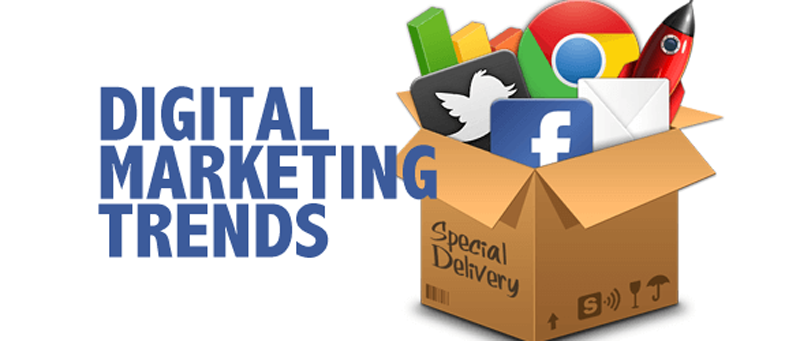As the summer draws to a close and the greyer months of the year begin to close in, it’s time to look back on 2019 so far. The final year of the decade has been eventful to say the least, with several new trends emerging and a few that are still gathering momentum. This is Probella’s guide to some of the most prolific digital marketing trends of 2019.
Live Chat
This trend is unlikely disappear any time soon and although many companies choose to use automated bots to create the impression of live chat, there are several organisations out there who employ professional customer service staff to field inquiries using this medium. As the younger generation eschews actual telephone conversations for digital messages, this style of customer service and general communication will continue to spread in the next decade.
Personalised Advertising
If we think back to the times when nobody really knew what an algorithm was, the idea of personalised advertising seems quite unusual. Some customers still find this phenomenon a little unsettling but the influence of the “like” button and similar, reaction-based technology can’t be ignored. Most customers prefer to see targeted ads as they are more relevant to their interests. This means gathering data about who you are customers are and what they like is more important than ever.
Pop Ups
This aggressive and let’s face it, irritating technique has now become commonplace. In many ways GDPR and similar legislation meant that web users got used to dealing with a pop-up message as soon as they landed on a site. Marketers have capitalised on this and are now using sign up forms, videos and even games in their pop-up ads. This approach really does split opinions, but as more and more companies adopt this approach, many customers are beginning to accept pop up marketing as an inevitable part of the online experience in the 21st century.
Influencer Marketing
Nobody could have predicted how big the influencer marketing sphere would become. There are now legions of full time, professional influencers making more money than some qualified industry experts, simply by posting content of themselves discussing certain products. As reality TV, YouTube, Twitch and Twitter continue to eclipse traditional broadcast entertainment, you can expect the influencer to be a permanent and very influential feature of digital marketing for many years to come.
Visual Search
Though most of us still search by using keywords, utilising image search as a way of finding information online is becoming more commonplace, especially amongst the younger generations. Pinterest were one of the first online companies to capitalise on this, using their lens search engine, users can look for products based on images alone. The implications of this are quite significant, especially for industries such as fashion or bespoke jewellery and furniture.
Voice Search
From Alexa to Siri, voice search has been around for a while now and its influence continues to grow. By 2020, up to half of all search requests online will be carried out by voice. Marketing professionals are already capitalising on this with companies such as Dominos pizza and even PayPal enabling users to order products or use services without having to pick up the phone or physically type anything. Its likely that voice search will continue to develop over the next decade, so expect personalised responses and even targeted adverts to be regular features on most phones and smart speakers.
Push Notifications
Like pop ups, push notifications are something of a necessary evil when it comes to digital marketing, however, they can be very effective. Browser push notifications are now becoming more common and users are engaging with them, too. Providing they aren’t too intrusive or unnecessarily regular, this type of instant message delivery can be a way to send out a succinct, direct message, including a call to action, without a customer looking at your website directly. Though many users block this type of content, some are perfectly happy to receive push notifications daily.
Social Media Commerce
Facebook marketplace, Instagram’s shoppable and a host of other integrated social media marketing platforms have begun to emerge over the past couple of years. 2019 saw this trend continue and we can expect the amalgamation of social media and ecommerce to continue well into the next decade.
Content Generated by Customers
User generated content is honest, genuine and very different from the shiny, contrived marketing campaigns we are used to seeing. Companies are beginning to understand the value of user generated content so we can expect to see this trend grow over the coming years. Quite simply, customers are more likely to trust the opinion of an average person they can relate to far more than something that is clearly presented by an organisation as a bid to make a sale.
Video Marketing
Video marketing has been around for decades but unlike the TV ads of the 1980s and 90s, modern day online video takes many different forms. Almost all smartphones and laptops can now handle video streaming, so expect to see companies using more moving imagery in their campaigns as the years progress. If a picture paints a thousand words, a video can illustrate a whole novel.
Quality Written Content
No matter how well somebody can design a logo, program a line of code or close a sale on the phone, if they are unable to write in a way that is grammatically correct, engaging and relevant to their audience, they will need to hire a professional content writer. As written English skills are in high demand, much of the content online is of a poor quality. Misplaced punctuation and things like syntax errors can render potentially quality content unusable. Apps such as Grammarly can help alleviate some of the errors but they can’t think like an experienced writer or marketing professional with specific industry knowledge. This means content is still king in 2019 and we can expect this to be the case for the foreseeable future.






